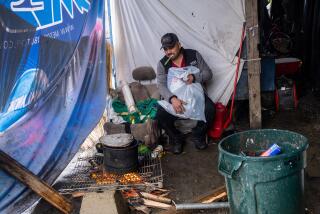Is a Better Address the Secret? : WELFARE WATCH: A promising Chicago program that gets people working
- Share via
Leaving the old neighborhood behind can be a steppingstone in the path from welfare to work, according to a significant study by Northwestern University. Single mothers who escape public housing projects in poor, minority neighborhoods are more likely to get jobs--especially if they move to middle-class suburbs.
A Chicago housing program called Gautreaux has allowed about 4,500 families--headed primarily by single, black women on welfare--to use federal housing vouchers to move to better environments in middle-class suburban and city neighborhoods.
Gautreaux is not a jobs program: Established in 1976 by a landmark federal class-action housing discrimination suit, it is intended to integrate housing in one of the most racially segregated cities in America. There is no training, no education and no requirement to get a job. But sociologist James E. Rosenbaum has proven that nearly 60% of the women--including second-generation welfare mothers--have found jobs.
More impressive is his finding that 49% of the women who had never been employed in their lives found jobs. Without help or prodding, they went from welfare to work despite common barriers such as low skills, discrimination, lack of day care and inadequate public transportation.
Success has been greatest in the suburbs. The new suburbanites cited the wider availability of jobs, increased safety for themselves and their children and their wish to be like their neighbors. Their children also did better in school or jobs.
These durable successes have persuaded Congress to fund a two-year demonstration program, under the auspices of the U.S. Department of Housing and Urban Development, to be tested in five cities.
The new programs should, like Gautreaux, screen applicants. That program requires participants to pay rents on time and not have more than four children. It is run by the Leadership Council for Metropolitan Open Communities at a cost of about $1,000 per family.
Thousands apply. Fewer than 300 mothers can be placed, however, because of low vacancy rates and a scarcity of landlords willing to rent to subsidized tenants.
Gautreaux helps poor parents escape concentrated poverty and dangerous neighborhoods that have few positive role models, and fewer jobs. For some welfare recipients, that’s all it takes to move them from welfare check to paycheck.
More to Read
Sign up for Essential California
The most important California stories and recommendations in your inbox every morning.
You may occasionally receive promotional content from the Los Angeles Times.













